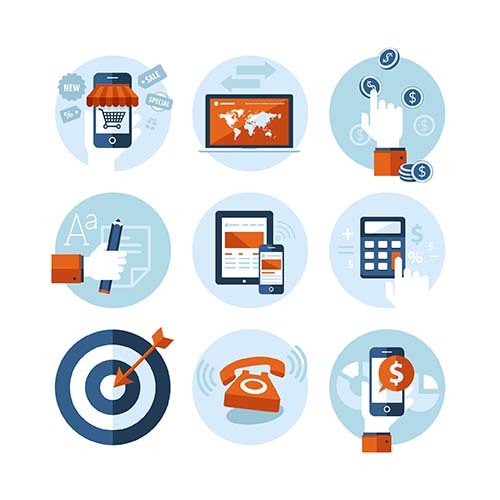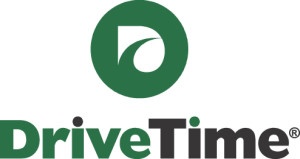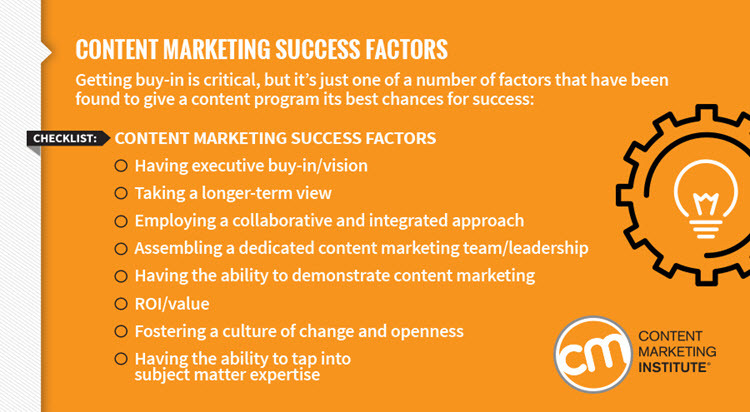An Executive Guide to Protecting & Repairing Your Company Reputation With SEO
Introduction
Warren Buffet, lovingly called “The Sage of Omaha” for being one of the most successful investors and management masterminds ever, says about Brand reputation, “It takes 20 years to build a reputation and 5 minutes to ruin it. If you think about that, you will do things differently.”
There are few things which are as delicate as your company and personal reputation.
It takes a long time to build brand reputation, but one little mistake and all the hard work goes to waste.
Indeed, one can improve it and keep it intact, but certain strategies need to be followed.
This is the era of the cloud – online presence alone is not sufficient; one needs constant input and brainstorming which allows your total presence to flourish and grow into something unique, something spectacular.
That way, the virtual audience experiences it and the brand reputation they create in their minds boosts the image of the company, both online and offline. Also, it helps counter the competitor efforts which often are directed to kill your image online.
Reputation management using SEO is new to many executives and CEO’s but soon-to-be indispensable tool in the hands of the professional marketer, and to the benefit of the online business owners and company investors.
To make the most of this online boon, read on.
Reputation Management – Protect Your Image
Online Reputation Management is a must these days because everyone is online – be it your customer or your competitor.
Ignoring it will cause lots of lag in the way you do business, because this is the easiest way to have a good PR and improve image in the public.
People will always judge you by your actions. And, inaction on the online front will keep them wondering where you are and why you may be hiding (when you’re actually not).
Online reputation management includes creating a good name for you online, dealing with any grievances in a mature and professional way, appeasing and appealing to the customer groups and announcing the image repair communication after some uncalculated, damaging move.
It will also assist in improving how you look in brand search results, like in Google. It’s not good if your brand pops up with some bad mouthing lurking along in the search results!
It also costs the company a lot (not just missed revenue) if the search engine results are laden with negativity or poor reviews as it affects the ranking as well as the credibility of a brand.
Especially in the case of small or local brands, the word of mouth prompts and sets off the dominos against the brand and it get reflected in the online horizon as well.
It can cost the brand dearly if these negative search results or news pieces or articles are not neutralized with something positive or believably corrective.
Your brand’s reputation can be judged by its standing in the search engine’s listing.
Search Engine Optimization – A Brief Introduction For Better Leverage
This word (SEO) gets a lot of attention. But it is also okay to not understand the term fully.
Often misunderstood, this is actually the entire umbrella of planning and smart execution to make the brand name or company name via online assets more relevant and valuable to the particular search engines, and thus helping them appear in the top results for keyword searches.
What SEO does is to:
- Improve the visibility of the website (pages) in searches.
- Makes the pages and web addresses valuable to all search engines (including YouTube, if using videos), making your brand appear to a wider number of people. We begin by focusing on Google, and Bing, Yahoo – other search engines follow naturally, if done right.
The essential strategy then, is to create and optimize content and technical aspects to make these pointers possible.
In all this work, think about the benefits for the readers. You’ll gain great value from engaging readers.
They become happy, returning visitors who share your content, and quality assets that you build (pages, images, videos, etc) over time that are linked back to from other destinations – will readily make these rise up high in the rankings…naturally!
Robots And Their Place In A Search Engine
You must be wondering why the title includes ‘robots’?
Most search engines operate using bots or spiders which actually “crawl” (a term given to the process of scanning the internet via links) and find results which it adds to its network of gigantic, ever expanding global databases.
The bot then passes control to the indexation process (database storage) and the result is a fast display of matching, relevant results to the “queries” which a user placed in the search input box.
The most important and relevant to us here is the last function which these systems perform – ranking or prioritizing the results, and displaying them from user’s queries.
This process applies to the way in which the results are displayed – ranked according to highest to lowest relevance. There are many factors impacting the results. And, this is where SEO allows us to promote our brand to a higher search result position and hopefully, better organic click through rate.
That is the very basic and most direct application of SEO.
Actually, the entire process of supporting the algorithm a search engine uses to identify its ranking list of searches for the customer is what professional reputation managers and SEO consultants do for your brand.
Ideas for Effective Reputation Management
Despite best efforts, executive management always feels it is not enough.
This seems true especially in the case of Online reputation management because all work many a times comes for no good – people still talk about the carefully nurtured brand in a negative way online.
The reputation you have today may not stay tomorrow.
Every day, a new effort to sustain the position has to be taken – the order and priority keeps on changing, it won’t stay at one place forever. It is the online world, things are real time and can change quickly.
This is a key point to be understood.
Here are 12 important tips which will help you to improve your reputation online:
- Have a presence online: The brand must own a space of its own on all social networking websites, all video and picture sharing websites and professional networking websites too. These websites make elements of your online reputation face and speak for you in various ways, adjusting your communication for the variety of audience present online. There is a huge benefit and opportunity to overtake your competitor online. Make the best use of the enormous amount of potential and existing customers you can find on these trusted, authority sites.
- Allow these accounts to flourish: Creating accounts on so many sites is one thing. But regularly updating them, filling them up with your latest and relevant content including regular revision of the communication being uploaded, is a huge task many of us fail in. These accounts are not just to show your presence; it needs to be felt by the audience groups by getting regular updates from your accounts. It has to be reinforced, day in and day out – it is a good idea to have personnel allocated with such specific jobs as managing, monitoring and revising the content put up on these accounts. Your plan may be to hire or utilize a social media manager. The interaction will die if neglected and these accounts will serve no purpose. Note: Each market is different, so make sure you get a proper analysis before you get started. Sometimes, a simple social media analytics tool can help in the beginning.
- Blog consistently – Blog is like online journalism; it can be put to effective application and good benefit can be gained from engaging content and keyword based search optimization. Also, regular blogging keeps the content scene lot more alive than just drone like typing of plain, previously used information. It also allows the customer to get a slice of your brand’s daily life, connecting him/her to the brand even more and opening that window of dialog. A potential customer opening up to talk to you is always good news. Do it yourself or hire people to do it for you – the effect is same if the requirement has been briefed properly.
- Respond well – It is a common observation that grievances have to travel wide and deep in the company before they reach the right people for a solution. Also, negative feedback handling is often clouded with ego and prejudice, which actually nullifies even a genuine complaint. Try and see if these tendencies can be avoided. Online complains about product or service should push you to analyze your product or the channels by which it reaches the consumer, for, there may be a problem which needs sorting out. Don’t feel shy to admit your mistake and think about ways to pacify the customer.
- Identify your key stake holders – The owners of the brand, the top professionals and anyone of note needs to be highlighted and well profiled in online forums, blogs and authority sites because this makes them look good, and also better protected from defamation by competition. They need to have clear and defined online personalities and this need to be done using sound planning and good discretion. This is especially crucial and necessary if the professionals are already popular or media friendly.
- Make your products the “stars” – Make your (popular) product a star product or brand by giving it a separate space online, like a separate account or page to be managed independently of the company page or account. The specific customer will only look at that page or content and it would be easier for you to handle the information regarding that particular brand. Similarly in some unfortunate event, if the reputation of the brand goes bust, your parent company remains somewhat unaffected online, and if it does well, you can bask in that glory too.
- Apologize – The customer is still the King! One small tiny mistake and not only can you lose a customer but also the brand’s reputation diminishes. Whenever there is even little dissatisfaction or unrest in the consumer group, identify the scope and immediately apologize. It will make you look like professional yet humane, with a brand who values the customer’s belief and opinions. In the long run, this type of natural, personal reputation management will take you new heights.
- Avoid a fight – Often, the comment boxes of product/company content pages are filled with numerous to- and- fro comment wars; the seller trying to justify its point and the customer often enraged with the brand and then the seller’s attitude itself. Try not to get into arguments online because it not only affects your reputation negatively, making you look like belligerent, lowly business people but also the word of mouth defamation of this incident will further lower your credibility and public relations. Always make a point to the customer in a traditional, non-public way (try to reach them personally) so that the said communication reaches just him or her instead of the whole world getting to know of your disagreement.
- Use the law – When none of the above applies, try bringing the damaging and unfair defamatory and damaging content to the notice of law and get it removed from the search engine results. The SEO technique involving the law can move your issue forward and fast track courts help get you some justice. Just don’t expect Google to react quickly! Try to resolve peacefully first.
- Don’t let a problem become a crisis – in today’s speedy communication driven world, it is difficult to manage a problem once it is out in the open. The point to keep in mind is to prevent a problem getting out of hand in the first place. Plan well on how to use the platforms, and create a policy guide that company members must read and understand. Constant vigilance and monitoring is required to closely observe the online trends and figuring out where they cross the line. This should include the monitoring of competition as well as the activity of ex-employees who are a strong potential threat to company. Mud-slinging is quite easy and can be expected if you don’t manage it in advance. Even if a crises sets in, contact your in house or external reputation managers as soon as possible so that they can observe the complications and suggest applicable measures to correct it. Small problems becoming a wild fire crises takes nothing in the online scene, so take calculated steps and keep everyone important in the loop.
- Involve the customer – The customer is always first, and is the chief executive of the relationship. But, these days he is also the route to search engine and reputation management success. Try to have innovative consumers engaged. Encouraging the consumer to share videos and pictures on how they are using your services (products or ideas too) via social networking and video/image sharing websites will help your brand and likely improve your search engine rankings. This is what we call killing two birds with one stone!
- Look for strong capabilities within your staff – This is more of a management point rather than reputation management or a SEO process step. Matching the candidate capabilities with job profiles is the utmost duty of a higher up professional while he is hiring or recruiting the candidate. While looking for a worthy candidate for the post of a reputation manager / social media manager, one must look for a sound work history or experience which includes his story on how he helped them build a good response in the past. Ask them to prove how “before and after” study can link their performance with their capability. Also, they must “own” the brand and be qualified enough to apply appropriate tactics to help your company to the best of its ability.
Last but not the least – one thing we all must do before all of the above steps are put into practice is searching our own name and brand.
If you do this regularly, you will see what your prospects, customers, vendors and partners are seeing and get a whole lot deeper perspective about the way your brand looks online.
Have a Google alert (google.com/alerts) set up for your name and brand. This way a check on any new content can be addressed. Make sure notifications are emailed to you at least once a day or even “as it happens”. Remember: Not all of the results will necessarily be important to you, but it gives you a pulse of the Internet for your terms.
A point of note is – nothing is really private online; though you can control what communication you let out and how. A high integrity company and brand will still not be able to control what others say about you, but you’ll understand and know the process when/if it happens.
If they are customers, their opinions can be trained to sound another way, opinions can be molded and inferences be influenced. This is done with great customer services and customer experiences. Try your best to convert them, without making anything sound or look fake. Be real, natural.
But do not hesitate in propagating corrective communication when you find something that is highly visible.
Be Proactive
One needs to be really careful and prepared for the reputation crises can strike anytime.
All days are not the same, and there is constant threat of defamation or disregard for the brand from many sources.
Be mindful that on the eleventh hour, this preparedness and proactive idea generation will help you take swift action and speedy steps for quick recovery from any small or large reputation “moment”.
Conclusion
Depending on your market, your business history and future direction, rainy days can and will happen. Make sure to bring your umbrella when it does!
Nothing better sums up the reputation management scenario over the Internet.
Allowing your visitor a good brand experience is very important to earn you a loyal and impressed customer.
Henry Ford has said, “You cannot build a reputation on what you’re going to do”.
It is obvious that reputation is being built on what you are doing, in the present and will build a correct portrayal of what you have already done. Continue that path.
Richard Branson, the father or Virgin group and a highly successful businessman says, “Your brand name is only as good as your reputation” – so make it good enough for yourself.
It is especially important to build a good brand with sound value systems alongside a good reputation online.
Without solidness in the brand and its core, no amount of good reputation is going to hold strong for a long time, but a quality team, a great brand/product and excellent reputation management will go a long way towards success.
Good luck managing your brand online!
For a complimentary strategy review session, visit:
https://chaosmap.com/reputation-management-services-los-angeles-guaranteed/
WANT THIS POST IN A DOCUMENT? FREE DOWNLOAD:
Download the FREE Web Brief on Reputation Management For Executives here. (PDF)




 If you’re looking to promote your brand, glean insights from these three brands that have great marketing campaigns.
If you’re looking to promote your brand, glean insights from these three brands that have great marketing campaigns.








 4. Captivating Professional Images
4. Captivating Professional Images


